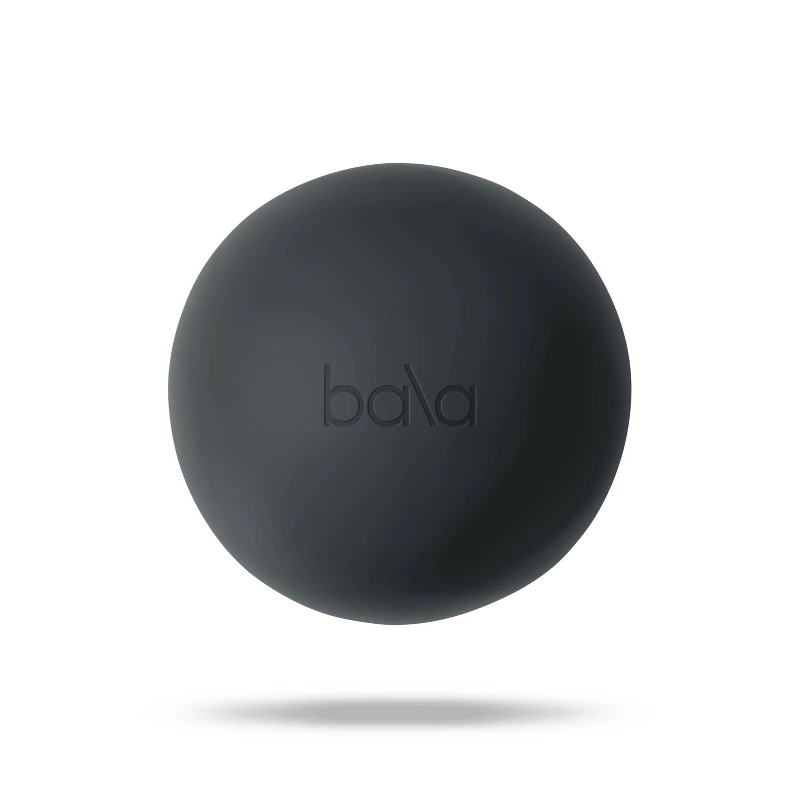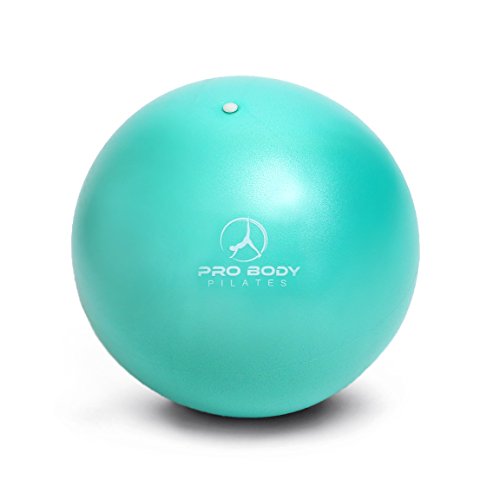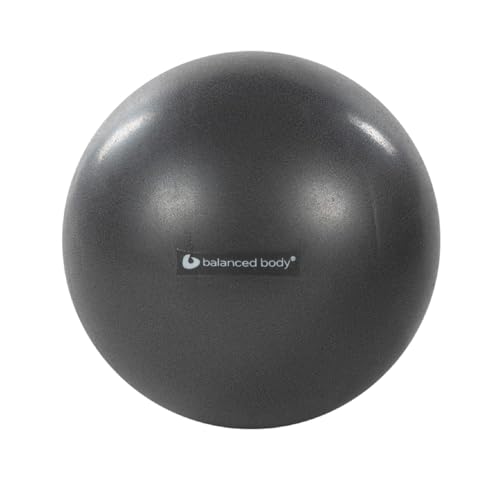A Pilates instructor recommends these three moves to improve your core strength and balance
Support your spine with these equipment-free moves
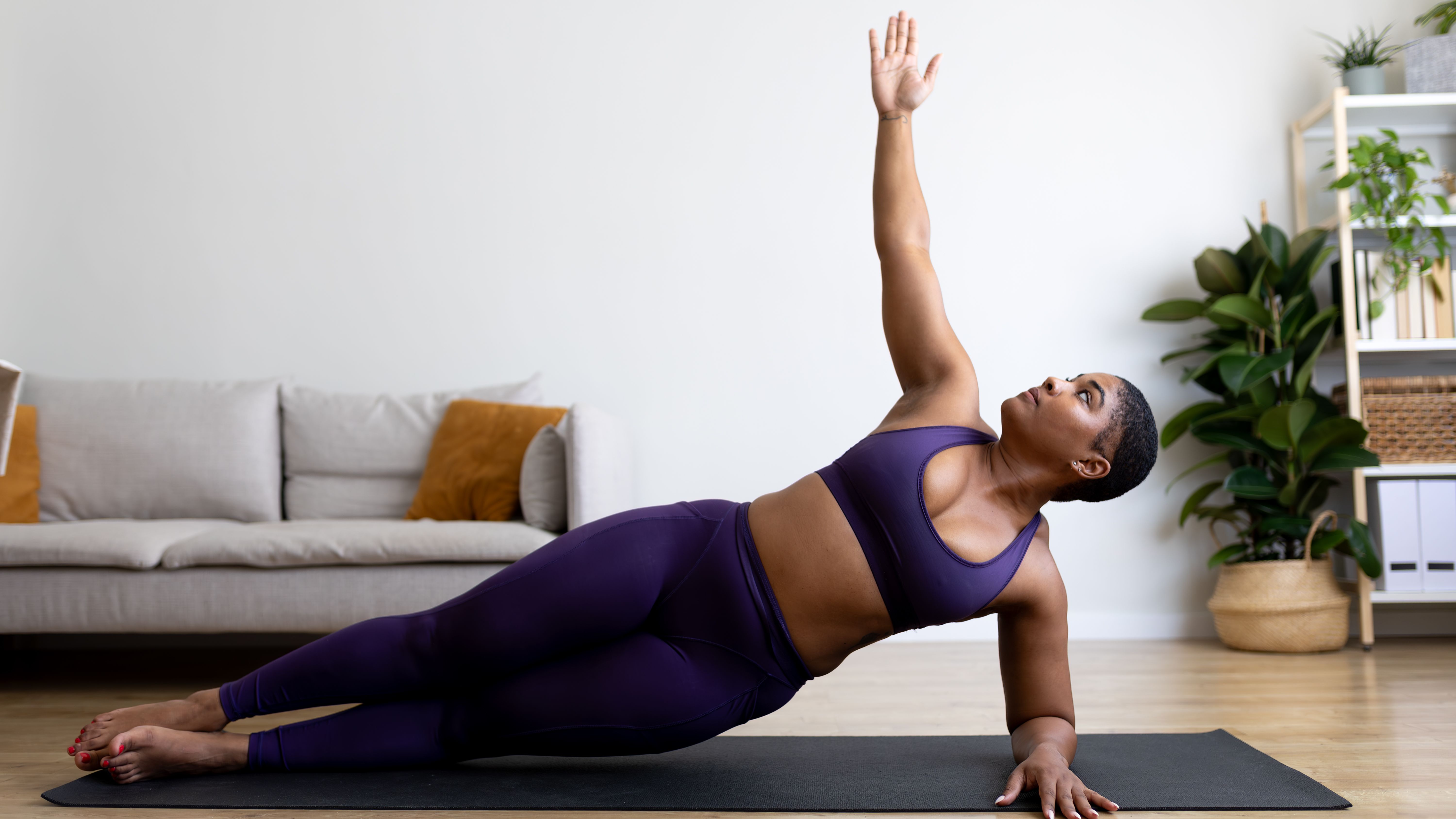
Your core plays an important role in almost every movement that you do, keeping you stable, and contributing to your balance and coordination.
Pamela Paley, a Pilates master trainer for Club Pilates, says that the core muscles are the central support system for your whole body.
“Without good core stability, our body would have trouble staying upright and controlled during static positions such as sitting or standing, and dynamic movements such as jumping or running,” she says.
“Having a strong core also helps to support the pelvis and spine and reduces strain on the lower back.”
Try these three Pilates exercises from the instructor if you want a stronger mid-body.
How to do the moves
Paley says you should always work within your own range of movement and without pain.
“Increase the time holding the position or number of repetitions as you get stronger, but always honor your own body,” she advises.
Start your week with achievable workout ideas, health tips and wellbeing advice in your inbox.
1. Side plank
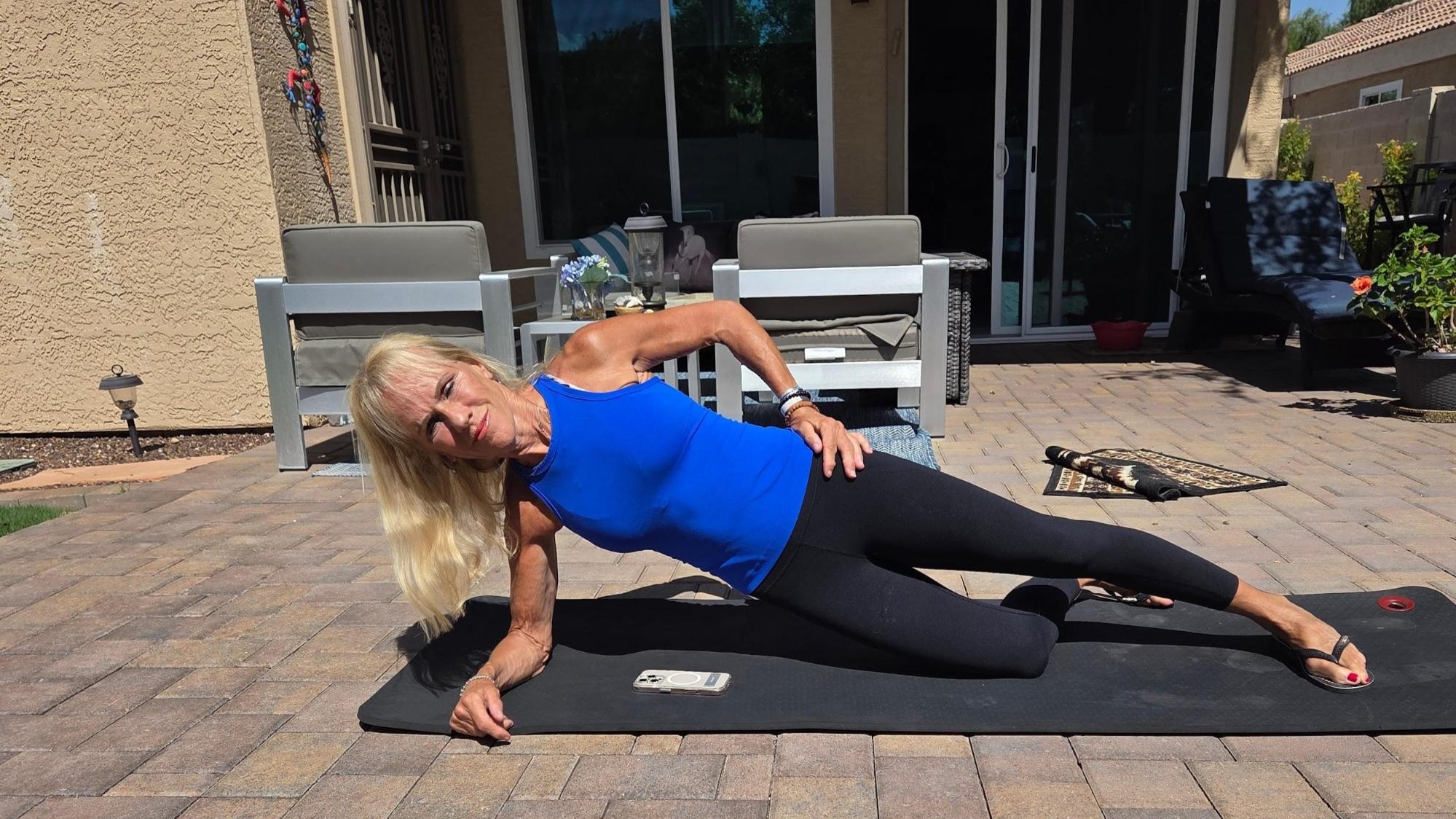
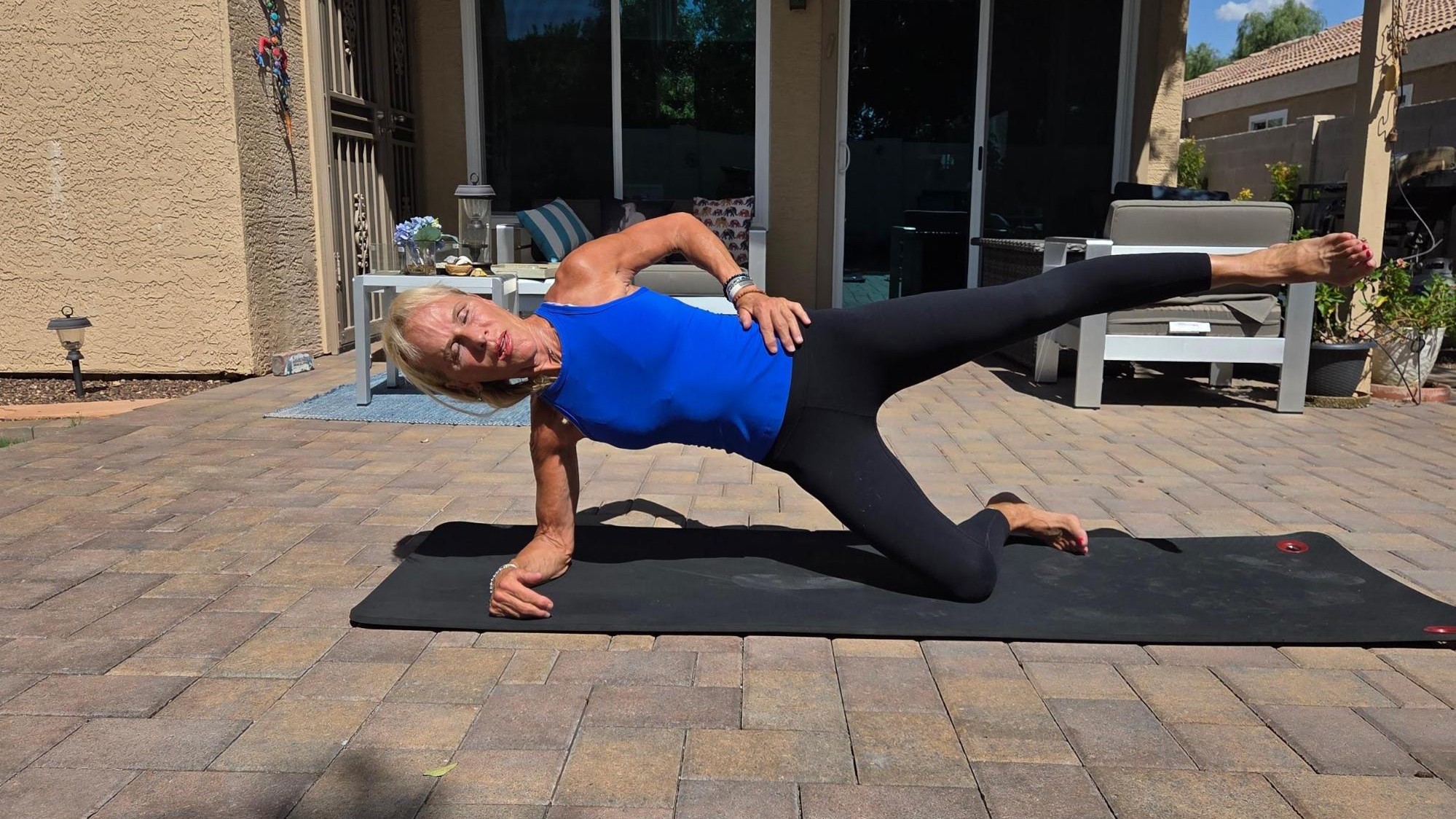
To make the movement harder, lift your top leg so it’s parallel to the floor and move it up and down.
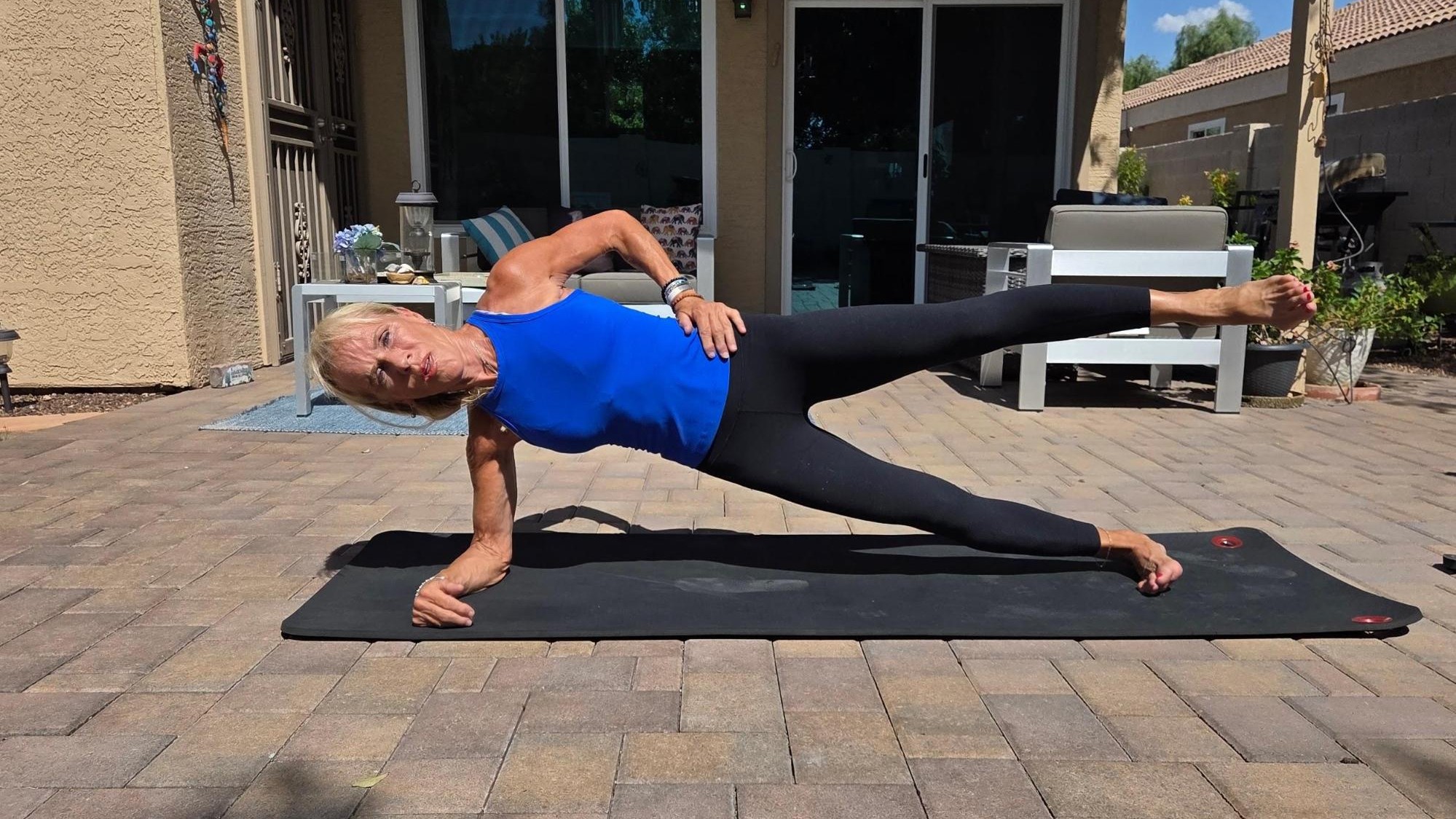
To progress the move even further, extend your lower leg.
Sets: 3 Time: 5-20sec each side
- Lie on your right side with one leg on top of the other.
- Bend your right knee to 90° so that your right foot is behind you.
- Push up onto your right elbow and forearm, ensuring that your elbow is directly under your shoulder and your forearm is pointing forward, away from your body.
- Inhale as you engage your core and lift your hips off the ground, keeping your right knee on the floor.
- Hold for 5-20 seconds before switching sides.
Make it harder: To make the move harder, lift your top leg so it’s parallel to the floor and move it up and down. You can make the move harder still by straightening your bottom leg and supporting your weight on your foot rather than your knee.
Form tips: Remember not to let your hips sag or lift too high, and avoid dropping your shoulders—keep pressing away from the floor with your supporting shoulder.
Muscles targeted: This exercise engages the muscles around your trunk, including your obliques (found along the side of your torso), transverse abdominis (which wraps around your mid-body), and your quadratus lumborum in your lower back. It also engages the glutes, which are the big muscles in your backside.
2. Bridge

Sets: 3 Time: 5-20sec Reps: 8-10
- Lie on your back with your knees bent and your feet flat on the floor. You can place a ball between your inner thighs to remind you to engage your inner thigh muscles.
- Squeeze your glutes and lift your hips without arching your back. Think about lengthening the back of your body while reaching your knees forward.
- Hold for 5-20 seconds and finish by performing 10 small squeezes of the ball, then lower and repeat.
Make it harder: You can ditch the ball and do a single-leg bridge for a harder variation, or perform with the soles of your feet together (also known as a butterfly bridge).
Muscles targeted: This exercise engages the large gluteus maximus in the backside, the hamstrings along the back of your legs and the erector spinae in the back.
Shop Pilates balls
3. Russian twist
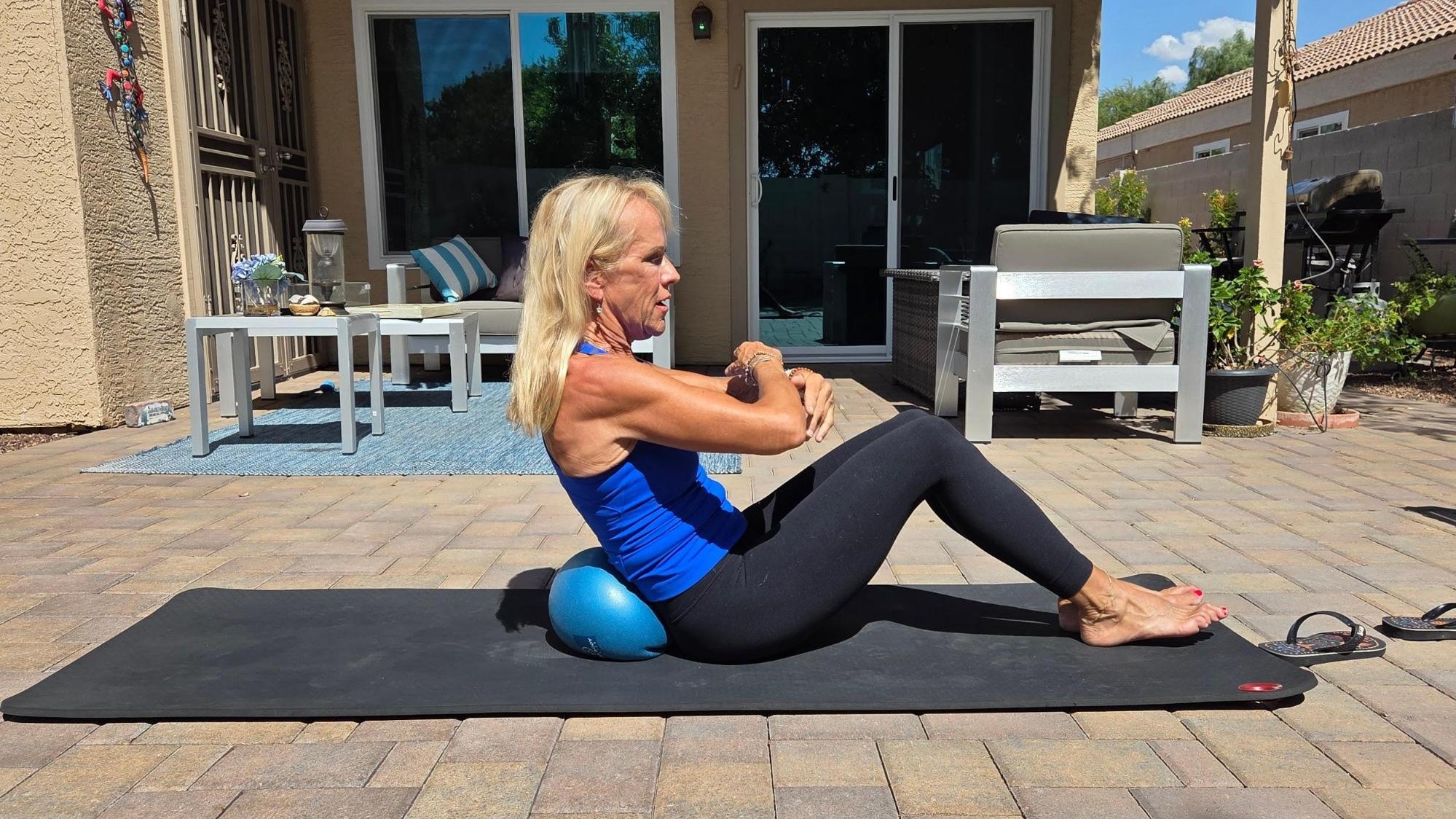
Sets: 3 Reps: 8-10 each side
- Sit with your knees bent and feet flat on the floor. Place a Pilates ball behind your lower back for support if needed.
- Hingeing at your hips, lower your back to about 45° or less, and engage your core. If this hurts your back, sit higher.
- Place your palms together in front of your chest and twist your upper body to the right, keeping your lower body still. Return to the center and repeat on the opposite side.
- Continue, alternating sides with each rep.
Make it harder: Hold a ball overhead and lift your legs off the floor for more of a challenge. You can also hold a weight in your hands to add extra resistance.
Form tips: Move slowly and with control, exhaling as you turn and inhaling as you come back to center. Don’t swing your arms.
Muscles targeted: This exercise engages the rectus abdominus on the front of the stomach, along with the obliques and transverse abdominis. Your hip flexors and lower back stabilizers are also engaged during rotation.

Lou Mudge is a Health Writer at Future Plc, working across Fit&Well and Coach. She previously worked for Live Science, and regularly writes for Space.com and Pet's Radar. Based in Bath, UK, she has a passion for food, nutrition and health and is eager to demystify diet culture in order to make health and fitness accessible to everybody.
Multiple diagnoses in her early twenties sparked an interest in the gut-brain axis and the impact that diet and exercise can have on both physical and mental health. She was put on the FODMAP elimination diet during this time and learned to adapt recipes to fit these parameters, while retaining core flavors and textures, and now enjoys cooking for gut health.
You must confirm your public display name before commenting
Please logout and then login again, you will then be prompted to enter your display name.

